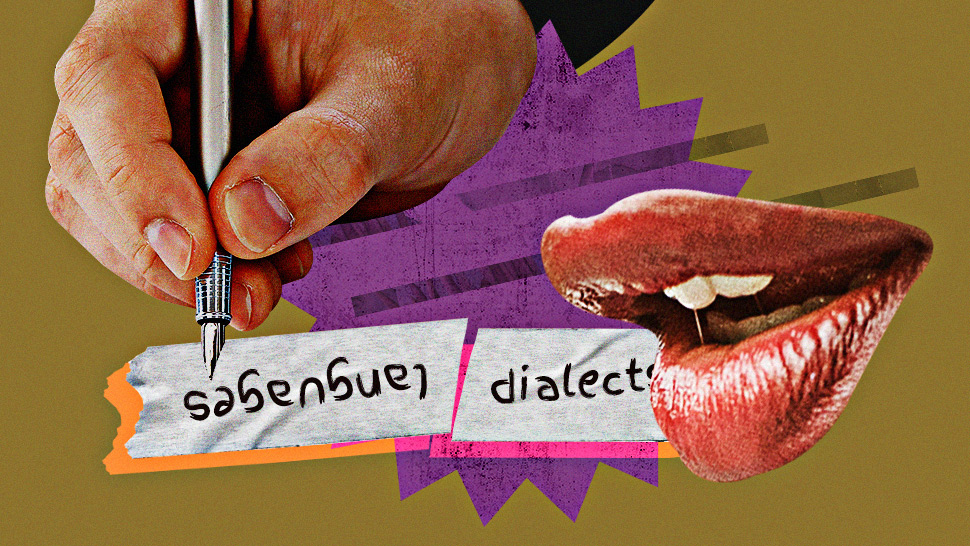It's Time to Reclaim Our Philippine Languages and Dialects, Including Filipino English

Philippine languages and dialects are a constant back-and-forth with ourselves and the events that have shaped the modern Filipino identity. Mapping them out is how we can trace our history and culture, even if it does expose some tough truths about our society's evolution.
With these conversations, it is important to note the difference between a langue and a dialect. We often mistake one for the other. So what are some of the basics?
A language is a system of sounds, signs, and rules. It is inherent to a particular place and is used by a specific group of people. Dialects are variations of these languages. They are indicators of divisions between regions and islands, as well. Communities separated by a region, river, or mountain, for example, can have different dialects from one another.
We can tell the two apart through four sets of criteria, according to research done by Earvin Christian T. Pelagio, a language researcher from the Komisyon sa Wikang Filipino.
ALSO READ:
Amirite, Ish, Swole, Janky, and More Are Now Official Words in Dictionary.com
The Secret Language of FX Drivers Has Been Decoded
The first is their mutual intelligibility. In linguistics, this is defined as a relationship between languages or dialects in which speakers have varieties but still understand each other with minimal effort required. Secondly, we can look at their lexical similarity. This measures similarities between two texts based on the intersection of words used in sets of same or different languages.
Grammar is third. These can be differences in inflections, syntax, phonology, or semantics. Socio-political identity is a factor, too. These identities may be formed by way of a people's particular ethnic community or the political system they find themselves in.
What's Up With "Official" Languages?
In the 1987 Constitution though, the Philippines' designated national language is Filipino (the constitutional framers probably meant Tagalog though). We can find its definition in Sections 6 and 7 or Articke XIV.
We can read in Section 6 that “the national language of the Philippines is Filipino. As it evolves, it shall be further developed and enriched on the basis of existing Philippine and other languages.” Meanwhile, Section 7 says: “for purposes of communication and instruction, the official languages of the Philippines are Filipino and, until otherwise provided by law, English.”
But if we think about it, the Philippines has transcended the need for an "official" national language. Not because we can't agree on one, but because we have too many of them to ignore. We have a country, after all, that is far too rich and diverse to be boxed into outdated categories.
Some 180 languages and 110 dialects, depending on the mode of classification, exist in the country. But oftentimes, these are unrecognized and are somewhat exoticized by our own countrymen. Hell, even kids don't want to converse in Tagalog anymore.
Even this article is written in English. The hypocrisy, right? But not so fast. This is written in the Filipino English dialect by a brown Filipino man, after all. We'll tackle this weird dynamic in a hot second.
What We're Losing
In a research presentation entitled "Language Preservation and Documentation of Hanunoo: Saving the Mangyan Culture" in March 2022, the Development of the Department of Science and Technology (DOST)-National Research Council of the Philippines claimed that there are about 187 Philippine languages.
Of that number, only 183 are considered living languages. Some 175 of these living languages are indigenous while eight are non-indigenous. There are also roughly 13 languages that have been classified as endangered and 11 of them are dying out. Four are, unfortunately, extinct.
When a language dies, culture is lost.
The Summer Institute of Linguistics' Ethnologue Languages of the World says that these dying languages include Arta, Bontok (Northern), Bontok (Southwestern), Dumagat (Remontado), Inagta Alabat, Agta (Katubung), Ata, Ayta (Sorsogon), and Ratagnon, Tagbanwa (Central), and Eskayan.
A language can be considered "dying" if the "only fluent users (if any) are older than child-bearing age, so it is too late to restore natural intergenerational transmission through the home," as per Ethnologue.
Languages die when they aren't passed down from one generation to the next. According to a report in 2019, the language of the Aetas, for instance, only had about 100 families speaking it.
Bikol, Cebuano, Hiligaynon (Ilonggo), Ilocano, Kapampangan, Pangasinan, Tagalog, and Waray are the eight major languages we have in the Philippines. Tagalog and Cebuano are the two most commonly spoken in the country, compromising more than half of the population.
Some Notes on Filipino English
Filipinos constantly reckon with neo-colonial realities. This carries over to languages and dialects, as well.
Let's take Filipino English versus Singaporean English, for instance. These two are dialects that fall under the English language because, in one way or another, we both can understand each other, but have very different sensibilities.
Filipino poet and National Artist for Literature Gemino Abad once declared:
"English is now ours. We have colonized it, too."
In a simpler sense, the Filipino English speaker, we can argue, does this on a regular basis. From how we teach to how we do our transactions, from scientists and lawyers to doctors and writers, including the ones at Esquire Philippines. This is how we can take ownership of a language that isn't ours to begin with. Filipino English has become our primary mode of communication in most cases.
The use of Taglish or even conyo, interestingly, is a separate conversation in itself. It offers us a glimpse of the roots of Westernization in some ways, too. Or perhaps we're just lazy. Either way, communicating in Filipino English and Taglish demonstrates social cohesion. Ultimately, naturalizing and deconstructing English, the best our people can, is the only way to make it Filipino.




.png)

